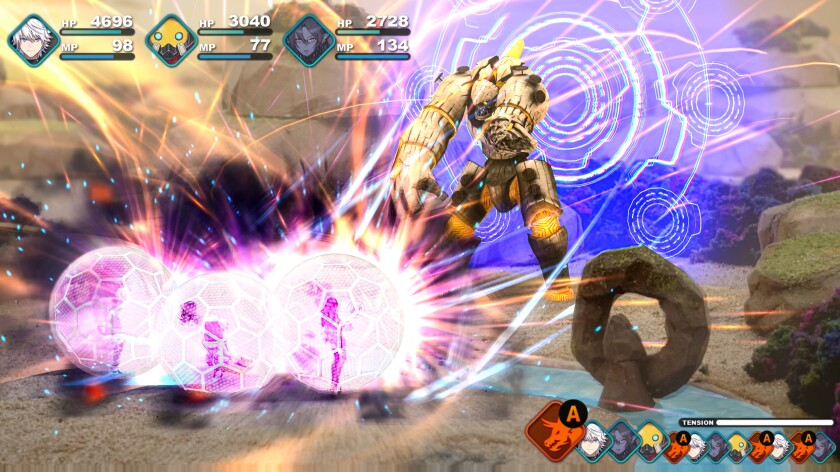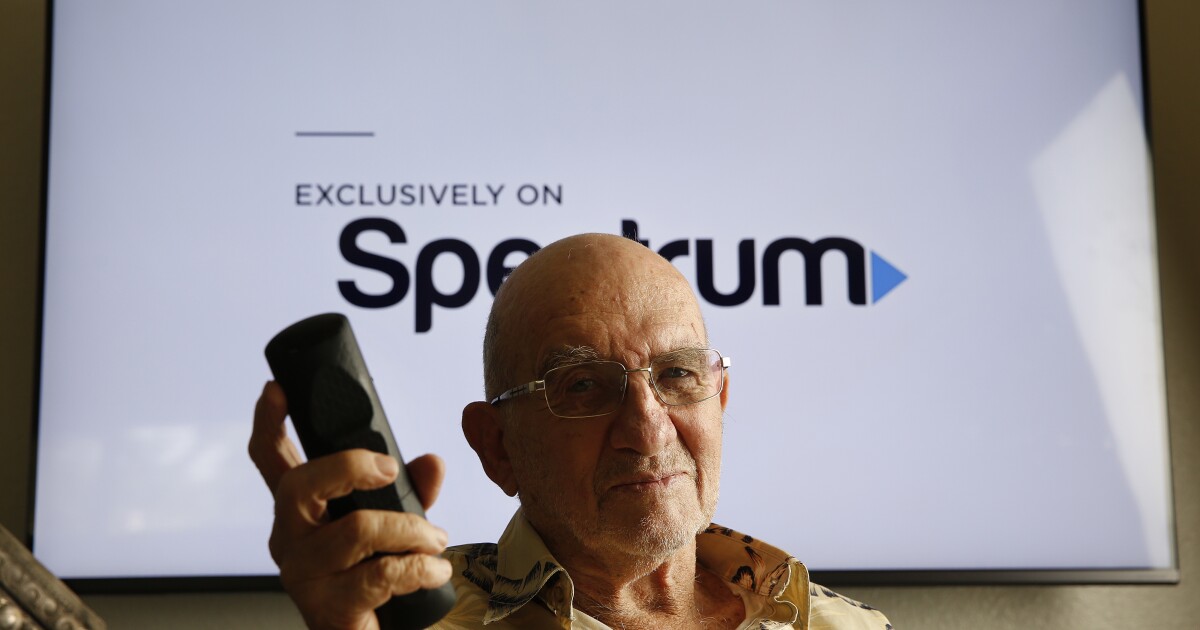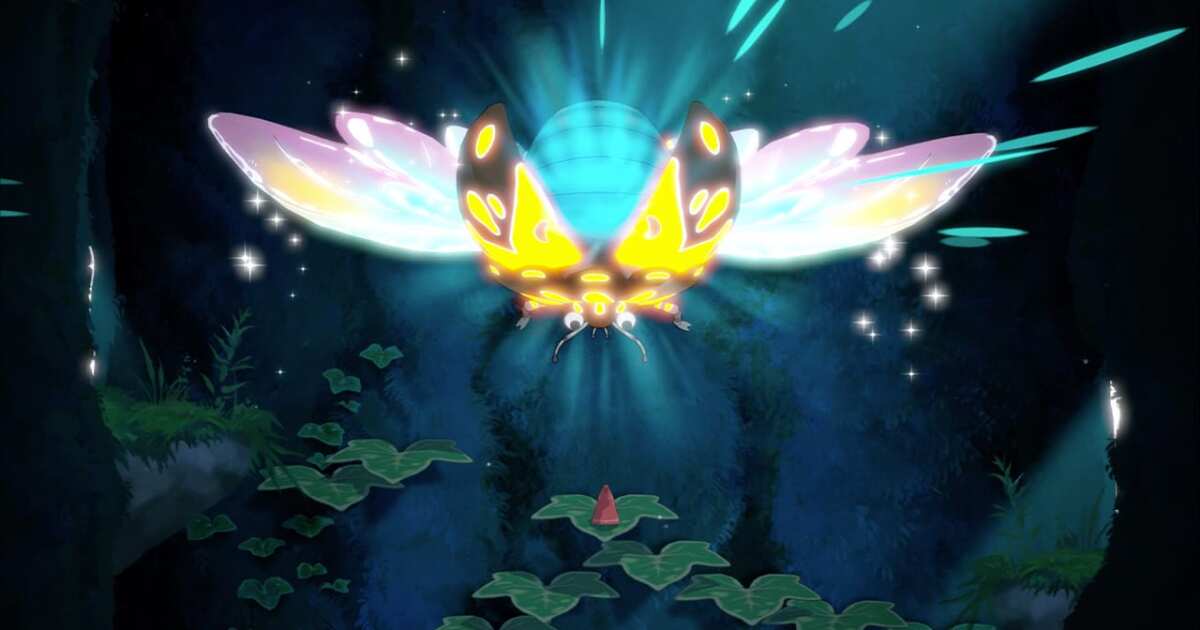How the creator of ‘Final Fantasy’ challenges himself: A game made with 150 dioramas

Before Hironobu Sakaguchi began work on his latest role-playing game — he’s championed and explored the RPG genre throughout his career — the creator of the famed “Final Fantasy” series opted to look back before setting his sights forward.
Sakaguchi not too long ago replayed “Final Fantasy VI,” the 1994 entry in the franchise that is still considered among the series’ best. Having turned his attention to mobile game development — with his next, “Fantasian,” launching as an exclusive to Apple Arcade, the tech giant’s subscription service — Sakaguchi says “Final Fantasy VI” offered a number of reminders and lessons for modern game development.
“Back in the day, everything was done in tiles,” says Sakaguchi, speaking this week via a translator. “Your character would move one tile at a time. That introduces puzzle-like elements, in which you might see a treasure tile that you can’t access. But if you walk around the building and go through the back door, you might be able to reach that chest.
“When the player,” continues Sakaguchi, “reaches the ending, it feels like they have seen everything this world has to offer. That desire — that craving that humans have — we’re trying to re-create.”
For “Fantasian,” Sakaguchi wanted to present players with an overview of a game world, offering them a universe that invites curiosity via what is shown rather than what is hidden. And yet the renowned Japanese game designer didn’t want to create a retro game.
“Fantasian,” however, is a bit old school, at least in how it places century-old storytelling techniques at its forefront — in this case, about 150 hand-built dioramas.
“Fantasian,” then, is the rare video game that will not just utilize physical environments but also celebrate them.
“Fantasian” merges the digital world with miniature dioramas.
(Mistwalker)
Those environments add a feeling of fragility and a lived-in, aged look to the game. Digital characters traverse landscapes that are heavily stylized, living photographs. A tiny bed looks like a cloud made of porcelain, towns and buildings emerge from hand-sculpted caverns, and the very real rocks have a foreboding presence when they clash with the game’s animation.
Video game engines today are capable of powerful, cinema-ready graphics, but with “Fantasian” Sakaguchi has created a mobile game that feels tactile — a world we want to touch.
“To be able to get that feeling from the other side of a glass screen was almost a poetic experience,” he says.
Sakaguchi isn’t kidding. When he speaks of the intricate dioramas for the game, he talks not only of a renewed appreciation for game design but also life itself.
“A big surprise for me — there’s a mountain-scape stage — and in the dioramas, there’s a little bit of green and flowers littered about the pathway,” he says. “I’m sure it was just a small decoration, but as we photographed it for transitioning it into a 3D-mesh and bringing it into the digital world, I would zoom into these flowers and — my goodness — it was amazing how strong their presence was inside of these scenes.”
And although the game could have been made entirely with computer graphics — rather than by building dioramas, taking hundreds of photographs of them and then scanning them — Sakaguchi says he wasn’t interested in that potential “shortcut,” although he stressed that development time would have been about the same.
In part, he simply wanted a role-playing game that looked strikingly different from anything else on the market. Also, after decades of working in the RPG space, the 58-year-old wanted a challenge.

Renowned game designer Hironobu Sakaguchi aimed for a singular look, meshing animation and photographed dioramas.
(Mistwalker)
“It’s possible to create something that is diorama-esque in the 3D, CG space, but I think there’s a unique handmade touch that cannot be replicated,” Sakaguchi says. “For instance, if you’re creating a vast forest in CG, regardless of whether you put in diorama-esque fixtures or give it that shading to give it a handmade feel, at some point it will become repetitive, too symmetrical. When making something with your hands, it warps the visual in a very unique way that can’t be replicated.”
The 150 dioramas were crafted by a staff of about 150. Although the battle scenes will be fully animated, Sakaguchi is betting on players wanting to absorb the dioramas. Thus, when enemies are encountered, players can send them to a mystical dungeon. Or, in other words, they can delay the battles until they’re ready for action, allowing users to dictate their own pace.
The game, about three years in the making and with no current plans to be made available outside of the Apple Arcade ecosystem, is nearing completion, with Apple beginning a promotional push this week by touting the exclusive, without a specific release date, in its App Store. And although Sakaguchi’s Mistwalker studio has worked in the mobile space before, with “Fantasian” he says he wanted no direct concessions to the smartphone and tablet-focused medium, saying it is his job, and goal, to create a game worthy of ignoring text message notifications.

The action in “Fantasian” is fully animated.
(Mistwalker)
“On a technical level, there have been some learnings from recent projects Mistwalker has undertaken,” Sakaguchi says. “But ‘Fantasian’ is a full-blown console RPG experience. I drew upon that experience. I want to re-create that feel and touch for ‘Fantasian.’”
This likely means we can expect a somewhat convoluted, deep and twisting story. The game starts with players in control of a protagonist named Leo, a character on a quest for his missing father. In relatively standard video game fashion, however, Leo’s memory is wiped, and he travels from a machine-driven world to the more rustic one represented by the dioramas. Sakaguchi says this simply scratches the surface, and memories of in-game characters are presented as mini fairy-tale-like novels.
In “Fantasian,” you will read.

Multiple intricate settings were created for Hironobu Sakaguchi’s game.
(Mistwalker)
“The novels are a system in the game that progresses between scenes,” says Sakaguchi. “Humans, when you read something, it really jogs the imagination in ways that being fed audiovisual cues does not seem to do. We’re talking about dioramas and, now, novels, which are a very old-world, old-school medium, if you will, and as you go through and read these stories, it gets the player to shift their mindset and use different parts of their brain as they go through this interactive experience.”
None of this, of course, should be a surprise to fans of Sakaguchi’s work. Over the course of his more than three-decade career, Sakaguchi has steadfastly focused on the RPG genre. What brings him back, he says, is the way RPG stories are told.
A good one, he says, should make the player feel like a tourist.
“The idea of exploring a completely new world is akin to traveling to a country we’ve never experienced before,” Sakaguchi says. “You’re walking down the street and discover this really cute cafe or boutique. There is a sense of discovery and wonder that comes with the RPG genre.”




